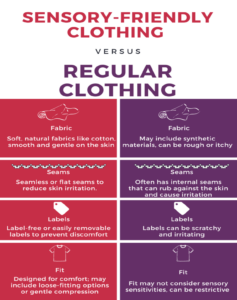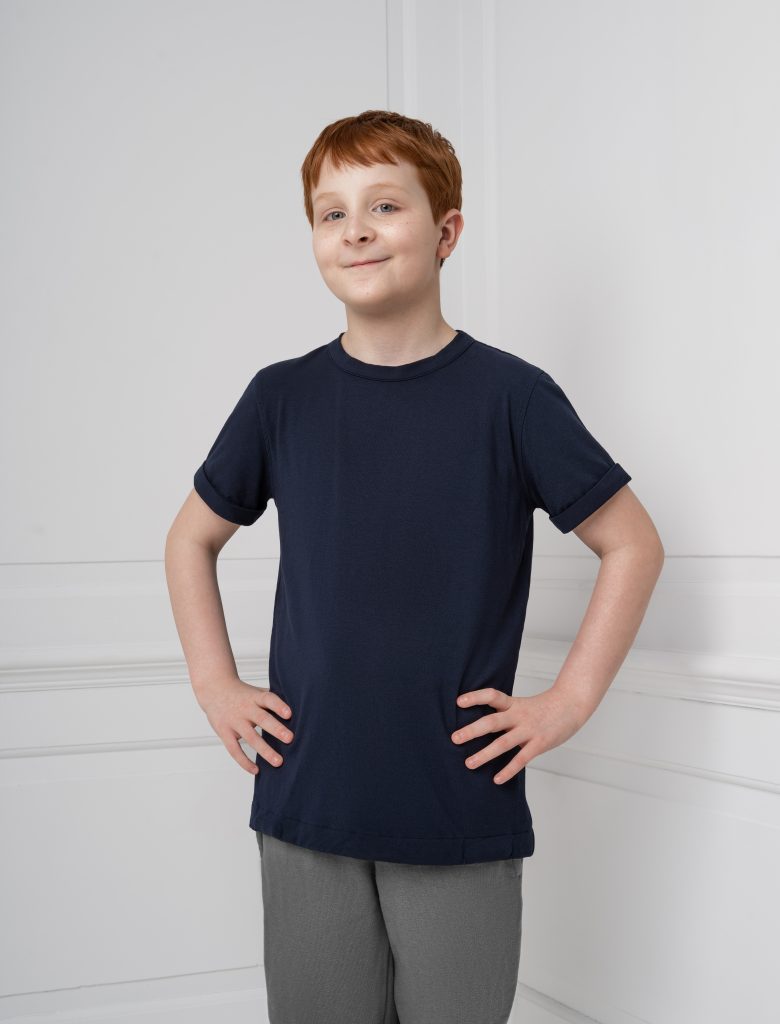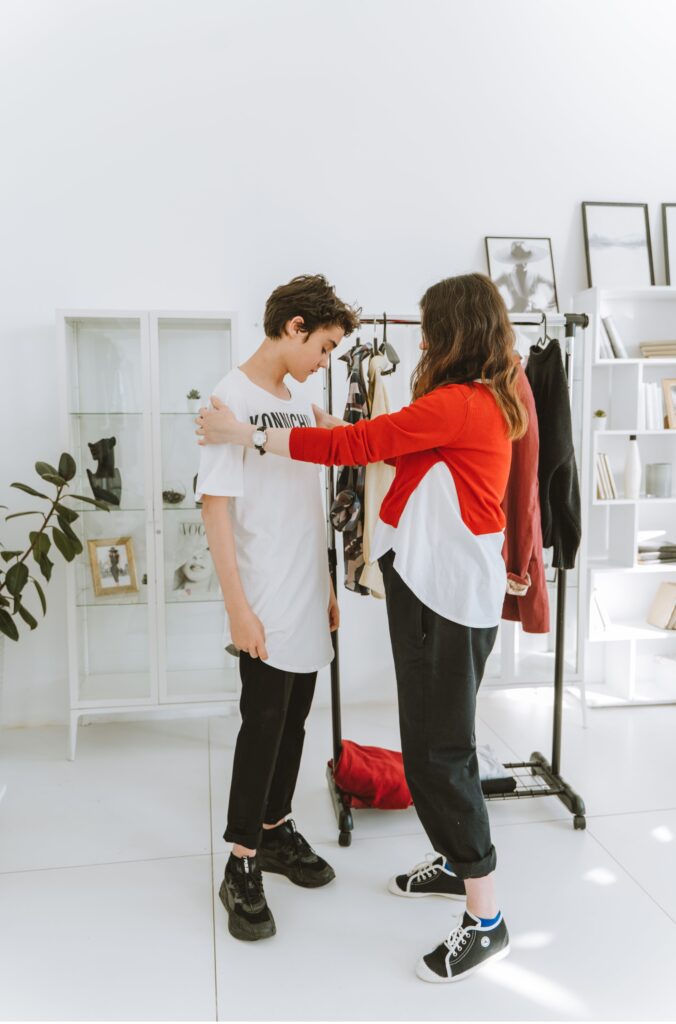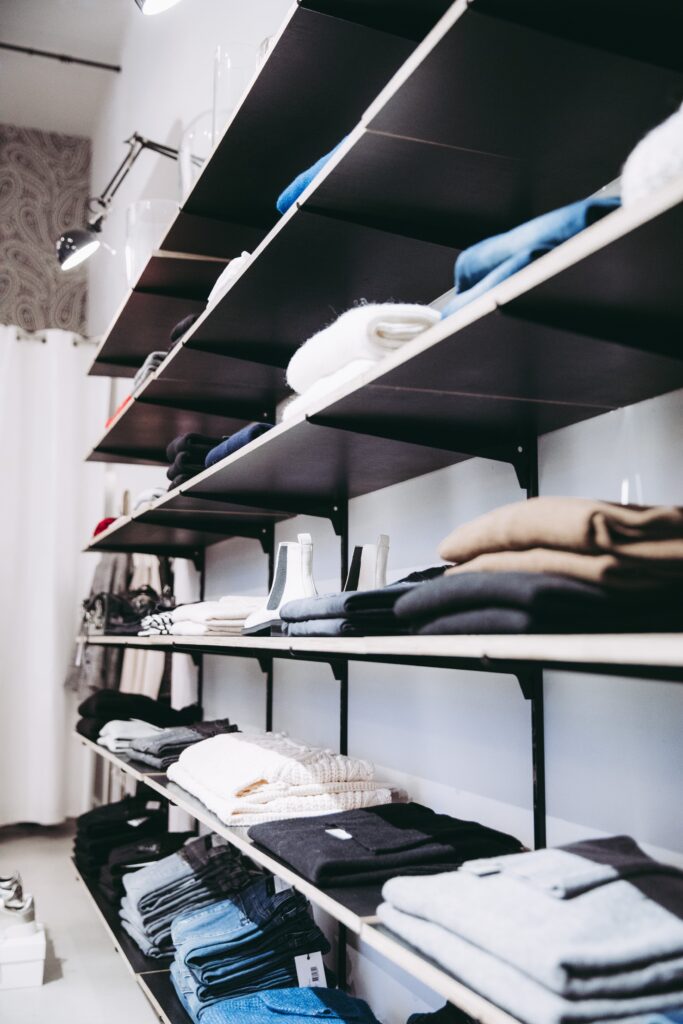Clothing is everywhere in daily life. From expensive designer fashion to cheaply made, disposable clothing, almost everyone chooses what clothes to wear each and every day. Some base their choice on what they have planned for the day, some on what they want to express to the outside world about themselves, and some on simply what comes first to hand.
However, for those of us with sensory issues, the majority of standard clothing can be completely unsuitable, leading to many struggling daily to choose between comfort and regulation, and the expectations and needs of life.
Into this void comes the area of Sensory or Sensory-Friendly clothing. Not just a specialized niche in fashion; Sensory clothing is an absolute necessity for many, giving relief and solace in finding clothing that is suitable for their needs. In the same way someone wouldn’t be expected to wear shoes that are two sizes too small, Neurodivergent people should not be expected to wear clothing that causes dysregulation and Sensory overload.

Neurodiversity encompasses the range of variations in the brain functions of humans, usually in comparison to the so-called ‘standard’ expectations of how the brains of the majority of the population function. Commonly recognised Neurodivergences are things like Autism, ADHD, Dyslexia and more.
It is common for people who are Neurodivergent to also experience Sensory processing issues, where sensory input – be it touch, sound, visual etc – is experienced in a heightened or diminished manner. These sensory issues can be recognised as part of a neurodivergence, or a separate diagnosis in the form of Sensory Processing Disorder.
Related: What is Sensory Processing Disorder?
Because of the heightened sense of touch experienced by Neurodivergent people, traditional clothing can often become a source of discomfort or distress. In research done by Comfa, the most commonly reported issues with clothing were from the feel of the fabric, the irritation of the stitching and the rubbing of interior labels on the skin.
The vast majority of respondents said that they had experienced a negative effect on their mental state from these things, often choosing their clothing purchases based on how likely they felt it was that the clothing would cause them sensory overload. For some, this left them with little to no options when choosing clothing. Sensory-friendly clothing addresses these challenges by employing thoughtful design elements like soft fabrics, seamless construction, and the removal of tags, providing a more comfortable and sensory-appropriate experience.

The primary advantage of sensory-friendly clothing is the significant improvement in sensory comfort it offers. The design considerations – like using softer, breathable fabrics and eliminating internal tags and rough seams – play a crucial role in minimizing sensory overload. For many neurodivergent people, this reduction in physical discomfort can lead to a substantial decrease in overall stress levels. The relief from constant sensory aggravation allows them to relax more, reducing instances of meltdowns or withdrawal often triggered by sensory discomfort.
Another key benefit is the positive effect of sensory-friendly clothing on a person’s ability to focus and engage in daily activities. Discomfort from clothing can be a major distraction, hindering the ability to concentrate, particularly in structured environments like schools. Often school uniform is mass produced with the main focus being keeping the costs low so as to be available to everyone at the school.
Sensory-friendly clothing, by virtue of its comfort, can significantly reduce these distractions, allowing children to focus better on learning and interacting with their peers. This can lead to a better school experience, allowing the child to focus on their studies, better social interactions with peers, and a more active participation in various activities. Additionally by eliminating a major cause of distress from the school day, trauma and the likelihood of things like after-school collapse are lessened.

Throughout his life, Max has struggled with the clothing available to him. From a young age, he would only wear a small set of clothing, because of the lower sensory distress they would cause. As he grew older and began to attend school, this was no longer an option due to the requirement to wear school uniform.
This was a major component of his daily after-school collapse, and subsequent ‘school refusal’ from the trauma. Often, after finally letting out his held-in dysregulation from masking during the day in the form of explosive meltdowns, he would get home and not be able to tolerate anything but underwear/soft PJs on his skin.
Understanding more about sensory issues and beginning to create sensory-friendly clothes like the Fidget-T has allowed Max to better navigate daily life. As well as being able to feel more able to be himself, interact with others and have less demands placed on him, it has also allowed him to be better placed to know what to look for when choosing ‘traditional’ clothing.
By learning what elements of clothing he had been finding overwhelming by eliminating them, he is now able to spot straight away an item of clothing that may or may not work.
Consequently this has led to lower anxiety and distress for him, as well as less wasted money on clothing that is not appropriate.
Related: Understanding the 7 Senses: Navigating Overstimulation and Understimulation in Everyday Life
Choosing the right sensory-friendly clothing for your child is more than a matter of style; it’s about understanding and catering to their unique sensory needs, ensuring their comfort, and enhancing their daily experiences. Here, we delve deeper into how to select clothing that not only suits but supports your child’s sensory profile.
The first step is to become attuned to your child’s specific sensory needs and challenges. Sensory sensitivities can manifest in various ways, and at times can change from over to under stimulated depending on the situation. Some might find certain textures, like wool, unbearable and scratchy, while others may feel overwhelmed by tight fitting clothing or tags inside clothes.
Pay attention to non-verbal cues as well; discomfort isn’t always able to be recognised or voiced, but rather in the child’s actions. This could manifest in a child consistently removing or refusing to wear certain types of clothing, or having a preference for clothing made from a specific material or style. If there is no obvious pattern to the fabric or style that they find difficult to wear, consider looking at other elements of the clothing that may be causing the issue.
This observation phase is crucial in shaping your understanding of what type of sensory-friendly clothing will be most beneficial for your child.
When exploring sensory-friendly clothing options, several key features should be considered:

Trial and error play a significant part in finding the right sensory-friendly clothing. Involve your child in the selection process, allowing them to touch and feel different fabrics and styles.
When trying on clothes, observe their reactions and ask for their input. This not only helps in selecting the right clothing but also empowers your child by involving them in decision-making. Make use of the store’s return policy if possible, particularly if you are buying for the first time, to allow the child the chance to try it in the safe environment of their own home.
Consider the sensory environment of the store, and either try to visit at quiet times or look to order online. Remember, comfort is key, and each child’s comfort level is different.
Integrating innovative clothing like the Fidget-T can add a new dimension to your child’s wardrobe. Max has designed it with sensory needs in mind, taking his own experiences of clothing and applying fixes to each issue.
The fabric is super soft and stretchy, and is complimented by felled seams that keep the itchy stitching away from the skin. Additionally the clothing has no attached labels, so there are no holes or damage to the clothing from cutting tags out. The Fidget-T also incorporates a unique sensory popit feature, that can help children self-soothe and manage sensory overload in a non-disruptive way.
In recent years, the fashion industry has seen a heartening shift towards inclusivity, with numerous brands and designers dedicating their talents to creating sensory-friendly clothing. This movement isn’t just about fashion; it’s about recognizing and catering to the diverse needs of neurodivergent individuals. In this section, we highlight the pioneering work of brands and designers in the field of sensory-friendly fashion and how they are making a tangible difference.
The world of sensory-friendly fashion is marked by a range of innovative designs across brands both big and small that blend functionality with style. Designers are rethinking conventional fashion norms to create clothing that addresses specific sensory challenges.
Examples of such developments include Marks & Spencers seamless underwear and socks, aimed at children who struggle with the feel of their traditional underwear, Asos who have recently launched an adaptive apparel line that includes sensory-friendly options, and Rare Birds who have a gender neutral collection that contributes to the National Autistic Society with every purchase.
This move towards more focus in mainstream fashion to include elements such as using tag-free labels, soft and stretchable fabrics, and flat seams, can only be of benefit to the neurodivergent community, and hopefully will be the catalyst for further development. For instance, the change in focus has led to other developments, like magnetic closures and adjustable waistbands, offering practical solutions for dressing challenges faced by individuals who also have motor skill difficulties.

The rise of sensory-friendly fashion represents a significant step towards a more inclusive world. As awareness grows, more brands are likely to join this movement, expanding the range and accessibility of sensory-friendly clothing. This evolution in fashion not only benefits neurodivergent individuals but also promotes a broader understanding of diversity and inclusion in society. The future of fashion is one where style and comfort coexist, catering to all sensory preferences and needs.
Feedback from consumers plays a vital role in the continued development of sensory-friendly fashion. Reviews and recommendations from parents, caregivers, and neurodivergent individuals themselves provide valuable insights for brands and designers. These firsthand experiences highlight what works well and what can be improved, guiding future design and production. Positive reviews also help other consumers make informed choices, ensuring they find the best clothing options for their or their children’s specific needs.
Sensory-friendly clothing is designed specifically for individuals with sensory processing sensitivities, often associated with neurodiversity such as autism or ADHD. These garments are made with special attention to fabric choice, seam construction, and overall design to minimize discomfort caused by typical clothing.
This type of clothing benefits neurodivergent children by reducing sensory overload and discomfort. It helps in minimizing distractions due to uncomfortable clothing, thereby enhancing focus, participation in activities, and overall comfort. This can lead to improvements in social interactions, learning, and emotional well-being.
Look for clothing with soft, breathable fabrics, minimal to no tags, flat seams, and non-restrictive fits. Ensure that the clothing is easy to put on and take off and consider your child’s specific preferences and sensitivities, such as their tolerance for certain textures or fits.
Yes, there are several brands that specialize in sensory-friendly clothing. These brands often work with occupational therapists and individuals with sensory sensitivities to ensure their products meet specific needs. Some mainstream fashion brands have also started introducing sensory-friendly lines. Examples include Comfa, Rare Birds and Marks and Spencers
It’s important to consider both size and the child’s sensory preferences. Some children might prefer a snugger fit, while others might find loose-fitting clothing more comfortable. It’s often helpful to try different sizes and styles to determine what works best for your child.
Absolutely! Sensory-friendly clothing can be both functional and stylish. Designers in this field are increasingly focusing on creating garments that are not only sensory-friendly but also fashionable, ensuring that children can dress comfortably without compromising on style.
Sensory-friendly clothing represents a significant step forward in inclusive fashion, offering tangible benefits for neurodivergent children and their families. By understanding and catering to diverse sensory needs, these garments provide comfort, reduce stress, and enhance focus, contributing to a better quality of life. As the fashion industry continues to embrace inclusivity, we can expect to see more innovations and choices in sensory-friendly apparel, making fashion accessible and enjoyable for everyone.
Swatches are only available to order from the United Kingdom.